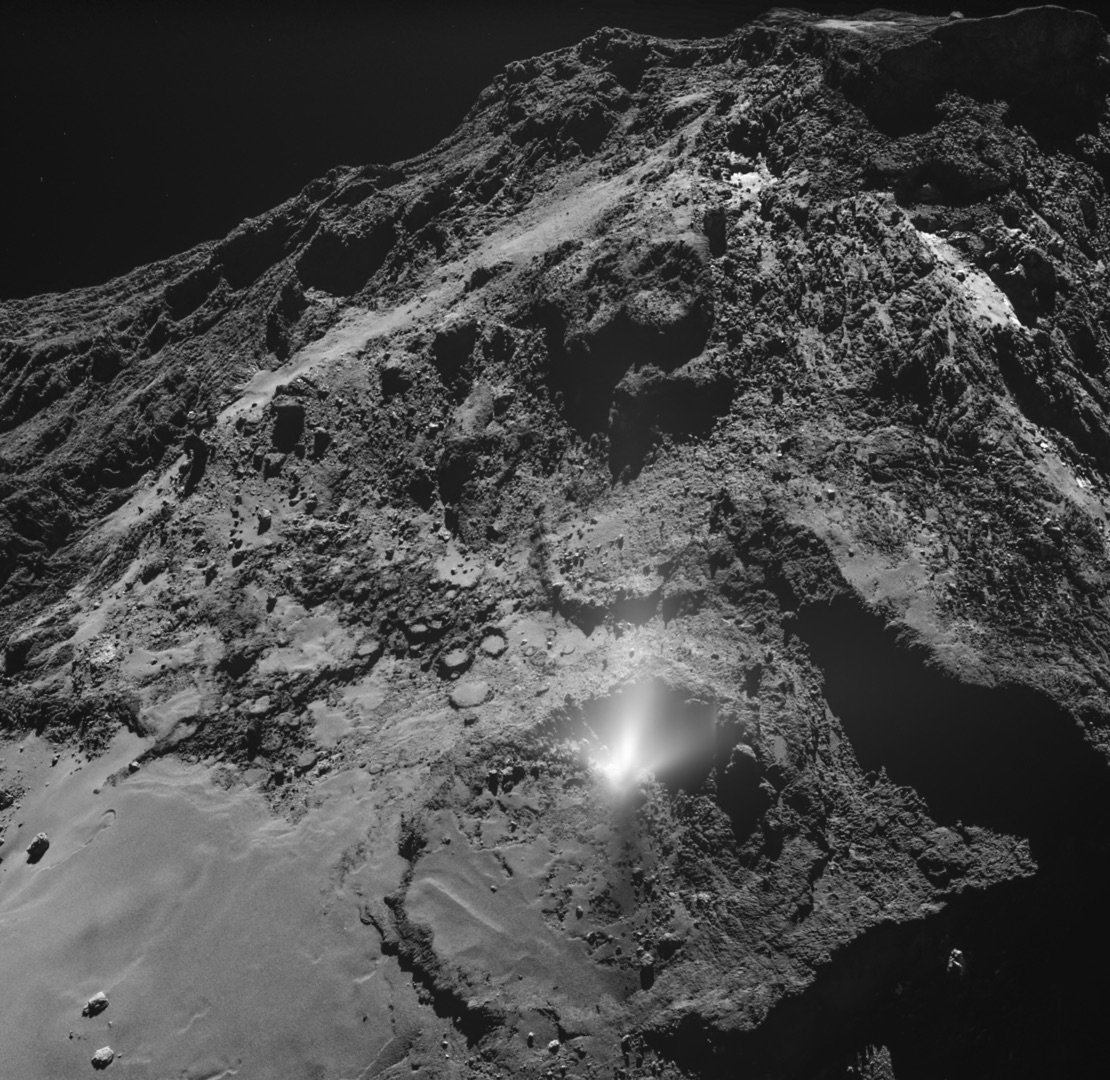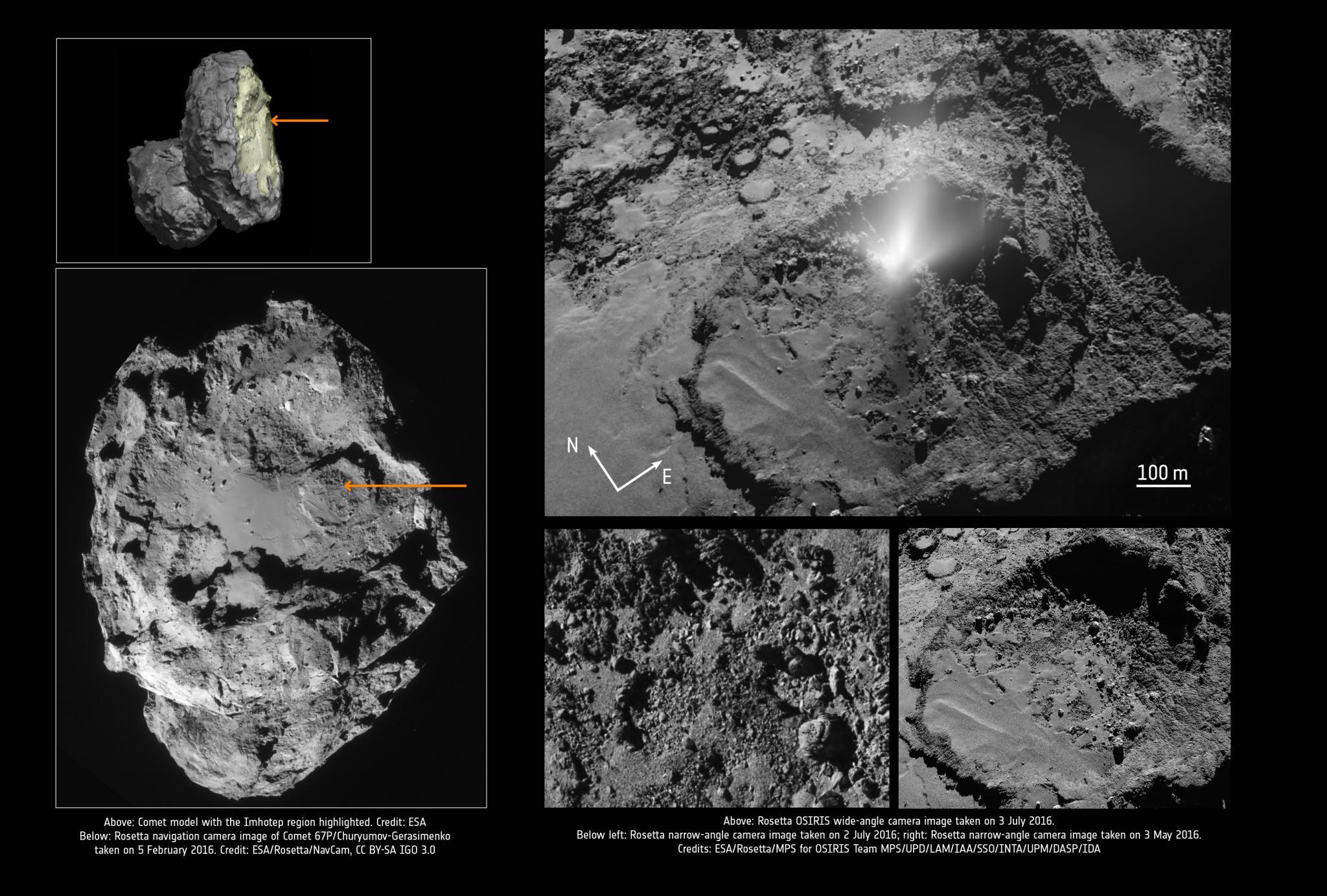Frozen Comet Fart (Actually a Jet) Caught on Camera

It looks like Rosetta's comet was a bit of a tooter. A fart from the comet — which scientists called "a bright plume of dust blowing away … like a fountain" — likely originated from the comet's insides, maybe from ancient gas vents or unseen ice.
The plume on Comet 67P/Churyumov-Gerasimenko was caught by Rosetta, a European Space Agency probe sent to study the comet, on July 3, 2016. (Rosetta's mission ended that September, but data analysis continues.)
"[The plume] lasted for roughly an hour, producing around 18 kg [39 pounds] of dust every second," Jessica Agarwal, lead author of the research and a scientist at the Max Planck Institute for Solar System Research in Germany, said in a statement. [Eerie Comet Landscape Revealed by Rosetta Spacecraft Photos]
While other plumes have been observed in the past, this outburst was particularly useful because Rosetta snagged a sample of the material, according to the statement. It also got high-resolution pictures of the explosion location, which was a wall 10 meters (33 feet) high around a circular dip on the surface.
"This plume was really special," Agarwal added. "We have great data from five different instruments on how the surface changed and on the ejected material because Rosetta was, by chance, flying through the plume and looking at the right part of the surface when it happened. Rosetta hasn't provided such detailed and comprehensive coverage of an event like this before."
Based on the amount of dust thrown into space, scientists theorized that something beneath the surface caused the rumble. But exactly what remains a mystery. Leading theories include pressurized gas bubbles inside underground cavities, or a trove of ice that burst apart when the sunlight hit it. Rosetta scientists continue to look at data produced by the mission, and to combine the information with computer simulations and laboratory examinations, to learn more about what was really going on.

"One of Rosetta's major goals was to understand how a comet works. For example, how does its gaseous envelope form and change over time?" said Matt Taylor, ESA's Rosetta project scientist, in the same statement.
Get the Space.com Newsletter
Breaking space news, the latest updates on rocket launches, skywatching events and more!
"Outbursts are interesting because of this, but we weren't able to predict when or where they would occur — we had to be lucky to capture them," he added. "Having full, multi-instrument coverage of an outburst like this, and its effect on the surface, is really valuable for revealing how these events are driven."
A paper based on the research was published in the Monthly Notices of the Royal Astronomical Society.
Follow us @Spacedotcom, Facebook and Google+. Original article on Space.com.
Join our Space Forums to keep talking space on the latest missions, night sky and more! And if you have a news tip, correction or comment, let us know at: community@space.com.

Elizabeth Howell (she/her), Ph.D., was a staff writer in the spaceflight channel between 2022 and 2024 specializing in Canadian space news. She was contributing writer for Space.com for 10 years from 2012 to 2024. Elizabeth's reporting includes multiple exclusives with the White House, leading world coverage about a lost-and-found space tomato on the International Space Station, witnessing five human spaceflight launches on two continents, flying parabolic, working inside a spacesuit, and participating in a simulated Mars mission. Her latest book, "Why Am I Taller?" (ECW Press, 2022) is co-written with astronaut Dave Williams.









